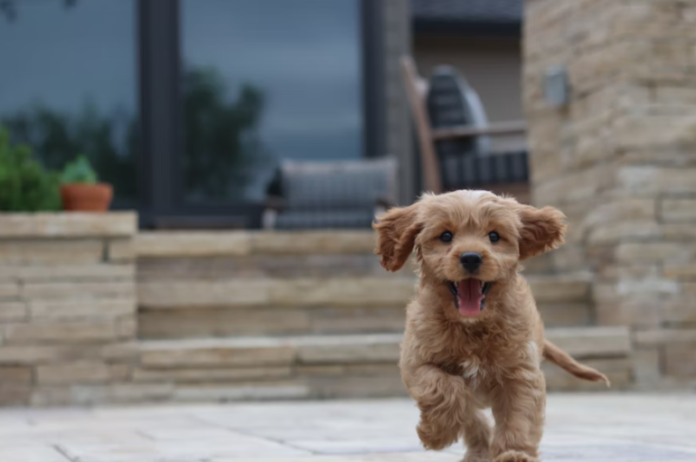If you’re interested in adopting a miniature Australian shepherd, you must be ready for a big commitment. They are high-energy dogs who need a lot of exercise and playtime.
They shed a lot as well, so it’s essential to brush them every day. A special brush for double-coated dogs can help with this task.
Feeding
When caring for your miniature Australian shepherd, you must ensure they have a healthy diet, regular exercise, and plenty of training. You’ll also need to keep them groomed and prevent health issues from developing.
The best way to ensure that your miniature Australian shepherd gets the nutrition they need is to feed them high-quality dog food for its age, size, and activity level. A nutritionally balanced, nutrient-dense diet can help support your Aussie’s health and happiness for many years.
These dogs have a lot of energy and need daily physical exercise to maintain a healthy weight and avoid behavior problems. If you don’t give them enough practice, they’ll become bored and irritable, resulting in unwanted behaviors like chewing furniture or ripping clothes.
It’s also a good idea to give your Aussie a variety of toys to play with, including puzzle and ball toys. These toys will keep your miniature Aussie busy and occupied for hours, which will help reduce destructive behavior.
Another thing you’ll need to keep in mind is that your miniature Aussie’s ears and feet can get furry, especially if they don’t get their nails trimmed regularly. If you notice your dog has a lot of hair in these areas, it’s a good idea to cut it down.
Grooming
To care for a miniature Australian shepherd, you must groom them regularly to keep their coat healthy and trimmed. This is especially important since they shed a lot.
You should use a slicker brush, steel comb, or de-shedding tool to brush through their long hairs to remove dead and loose hair. This helps to prevent mats and tangles from forming, which can become uncomfortable and restrict their movement.
This is also an excellent time to check for ticks. You should check your dog’s toes, behind their ears, under their tail, and belly daily during summer and fall. If you find any ticks, use a tick hook to remove them as soon as possible.
Grooming is a great way to bond with your pet and keep them looking their best. It can be done at home, or you can hire a professional to do the work for you.
When trimming your dog, start at the tail and work to the head. This will help to maintain the dog’s natural bobbed look.
Tip: If you have a small space and lack the equipment to groom your Australian shepherd, consider hiring a local dog groomer to do the work for you. These professionals have the proper tools and can do the job in a safe and sanitary environment.
Exercise
As a herding breed, miniature Australian shepherds are very active and need daily exercise to keep their energy levels in check. Long walks, hikes, and playtime are all ideal for these intelligent dogs, but they also like puzzle toys and interactive games that stimulate their minds.
Training a miniature Australian shepherd is easy and fun for you and your pup. These dogs learn quickly and love to show off their new skills to their owners. Start with basic obedience and potty training, then move on to more complex tricks and dog sports as your pup ages.
If you have an Aussie with health or medical concerns, it is best to talk with your vet before starting any exercise program. They may recommend a different or lower exercise volume depending on their needs.
An overweight dog should also have a lower exercise volume, as doing too much can cause them to become sore and damage their joints and muscles. It is essential to use diet to help reduce their weight gradually.
These dogs are a natural herding breed and have a strong desire to herd and protect. Socializing them from a young age is crucial to teach them not to herd or pounce on strangers. They are very loyal and possess a strong sense of ownership.
Training
Miniature Australian shepherds are brilliant dogs, and they respond well to training. Their natural tendency to work with their owners makes them an excellent choice for active families willing to spend time teaching their dogs basic obedience.
Generally, start training your puppy at about six months and keep going until he’s at least a year old. Start with basic commands like “sit,” “down,” and “heel.” When your dog masters those skills, move on to more advanced ones.
Aussies need a lot of exercises, so you should give them plenty of time outdoors daily. They also love to play, so you can engage them in games like fetch or hide-and-seek or sign them up for agility training.
It’s essential to remember that your dog’s mental stimulation needs are equally as crucial as their calorie intake. This is why feeding your dog high-quality food that provides all the nutrients they need to stay healthy is vital.
If you cannot give your dog the daily exercise they need, consider hiring a professional dog trainer to teach them the necessary skills. A trained trainer will be able to ensure your dog gets the mental and physical exercise they need while also keeping them safe.










